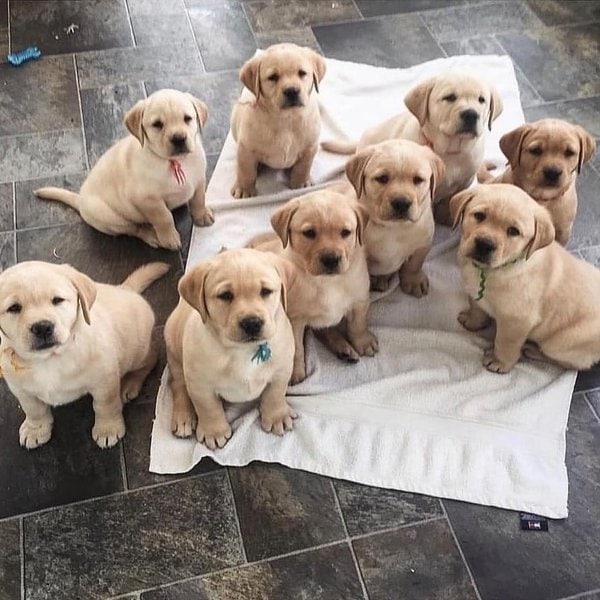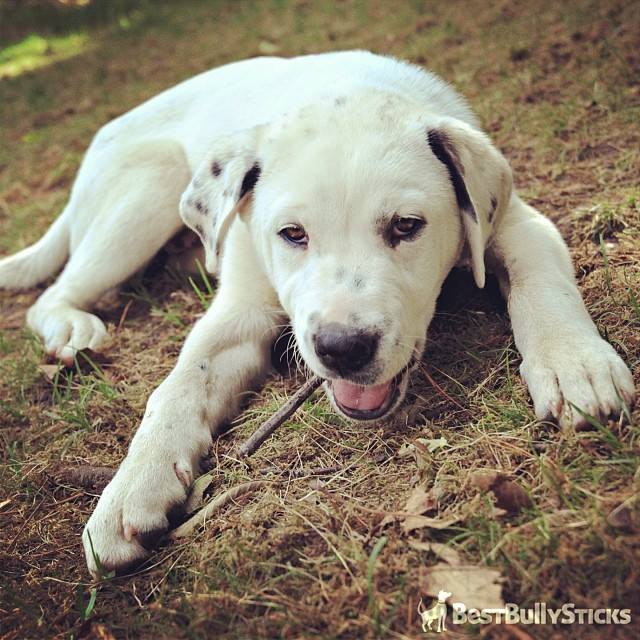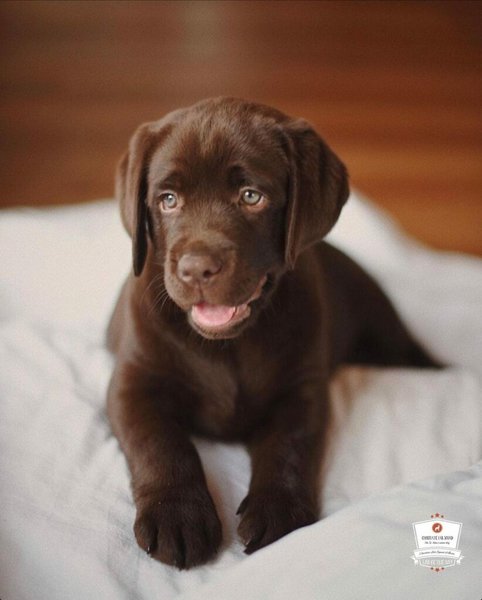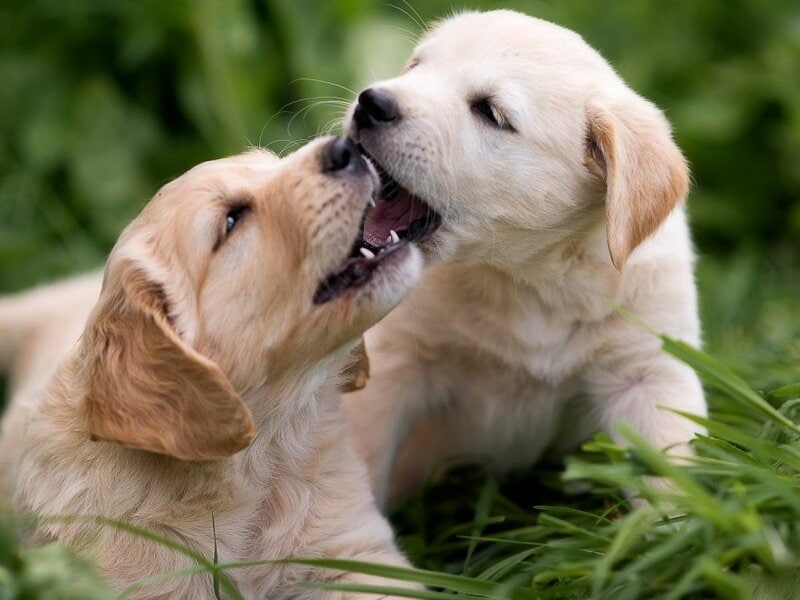In the dogdom, all dogs are equal as deserving pets, but some are definitely more equal than others when it comes to popularity.
America’s sweetheart, the Labrador retriever has maintained its popularity among US dog owners for years. Not for nothing though, dogs in this breed are known for their friendly, energetic, and outgoing social nature.
Labrador puppies are born with a well-balanced body, a broad chest, a short and dense double coat with black, yellow, or chocolate color. Their kind and alert eyes reflect a friendly, smart, and social nature. Lab puppies are naturally playful and their high-energy requires good nutrition and care.
If you are a first-time Labrador owner and plan to bring home a Lab puppy, you should do your homework and know everything about a Lab puppy’s feeding, grooming, exercise, and other care needs. Looking for everything you should know about Labrador puppies? This article is for you.
What Should I Know About Labrador Puppies?
Puppies in every dog breed will come with an undeveloped representation of the features that will characterize them in adulthood, and that is true also of Lab puppies.
These puppies have both general and breed-specific care needs and show clear physical and temperamental changes as they gradually develop.
What Will Lab Puppies Look Like?
Going by the standard colors, Labrador puppies are born black, yellow, or chocolate. They will subtly manifest the strong build body of adult Labs.
They will also have the features of a triangular head, a wide nose and forehead, moderately floppy ears, and the kind but alert eyes of a smart dog.

Caring For A Lab Puppy
In the first 3 to 4 weeks of their life (neonatal phase), Lab puppies are not hard work. They will spend most of their time sleeping and with their mother and litter-mates.
They’ll also rely solely on their mother’s milk for nutrition until they begin to be gradually weaned by the 6th week. By this time, you’ll also need to give them a little more care and attention and slowly introduce training.
Growth Changes In A Lab Puppy
Lab puppies grow fast and a lot of physical and sensory development will happen in the first few weeks. During the neonatal phase, a Lab pup will gain twice its birth weight.
Since Labrador puppies will generally grow 2 lbs every week, you’ll expect your Lab pup to weigh around 20 lbs by week 10. They’ll keep putting on weight until they have reached their adult weight by the age of 1 to 1.5 years.
If you plan to neuter your Lab, you should do so after puberty (9 to 15 months) as there are health benefits associated with doing it at that stage according to the AKC.
How Do You Raise A Lab Puppy?
Raising a Lab puppy is at the same time exciting and demanding. You’ll enjoy seeing your dog mature while committing yourself to meet their nutritional and other care needs.
Lab Puppy Nutritional Needs
Labs are good eaters and should be weaned by 6 to 8 weeks. Since they are a medium-large breed, a Lab puppy should be fed 1½ to 3¾ cups at around 6 to 8 months and 2⅝ to 6¼ between 1 and 2 years. This should be divided into small quantities throughout the day.
According to Purina, the pet food manufacturer recommends that puppy food should have a balance of the following nutrients:
- Carbohydrates for the energy to support their active playful life.
- Protein-rich formulas to sustain their fast-growing muscles.
- Calcium to support their developing bones and teeth.
- DHA to support healthy vision and brain.
Supporting Your Lab Puppy’s Nutrition
If you are not sure your lab puppy is absorbing all the nutrients from their food or your puppy is having issues digesting their food especially during the first days of weaning, consider giving probiotic chews.
We recommend Multivitamin Treats Supplement – Zesty Paws Probiotics. These will support your pup’s gut flora and digestive health, aid in healthy bowel movement, support the immune system, and counter any diarrhea or other tummy issues.
Organic Food Alternatives For Your Lab Pup
If you are looking for the best in nutrition for your growing Lab puppy, consider dog meals made with human-grade ingredients like Pet Plate. Their meals are cooked under the same human food safety standards and are recommended because they are:
- High in protein
- Grain-free
- Enticing for picky eaters
- Perfect for active dogs like Labs
Remember that your fast-growing Lab puppy will be quite active. You should, therefore, ensure their safety using a tracking strip on their neck.
The Blazin’ Safety LED Dog Collar is a great choice as it gives clear visibility up to 350 yards, and runs for 8 hours with a full charge. Besides, it comes with an ‘S’ size for puppies and can be resized up to 40% of its total length.
What Do You Need For A New Labrador Puppy?
In the first months, your lab puppy will need a good balance between play, exercise, and sleep. Purchasing an assortment of toys and play equipment will help keep your Lab pup occupied.
How Much Exercise Does A Lab Puppy Need?
Since they were bred as hunting dogs, being active is in your Lab’s DNA. But exercise should be introduced gradually. According to the UK Kennel Club, a good rule for puppy exercise is 5 minutes of exercise in the morning and evening for every month of age.
So, your Lab puppy should do 15 minutes of exercise twice daily at 3 months and half an hour twice every day by the time they are 6 months old. Avoid over-exercising your Lab puppy as this can damage their developing joints and predispose them to the related bone and joint illnesses.
Play And Exercise Toys And Equipment For Your Lab Puppy
To keep your athletic Lab puppy active, you can consider swimming as this is part of their original breeding as retrieving dogs.
Playing ‘fetch’ is an exciting exercise for your Lab pup. You can make it even more exciting using simple or technology-aided toys. Consider these two options:
- The Chew King Fetch Balls come in a triple pack and are made of safe, natural rubber. It bounces well and will withstand a pup’s tough chew. You can tuck a treat inside to motivate your Lab pup.
- The iFetch Interactive Ball Launchers For Dogs is an automatic ball thrower specifically made for puppies and smaller dogs. It comes with 3 tennis balls and can be adjusted to launch to 10, 20, or 30 feet, plus it works well both indoors and outdoors.
Your Lab Puppy’s Sleep Needs
Sleep is essential for your Lab puppy’s brain and muscle development. You Lab pup will sleep between 18 to 20 hours daily.
A good bed will facilitate good daytime and nighttime sleep. Consider the Iconic Pet Rectangular Rattan Dog Bed. This esthetically appealing dog bed can be kept both inside or in the courtyard. It comes in different sizes, is metal-framed, and has a water-resistant cushion cover, making it easy to clean.
Why Do Labrador Puppies Bite? Temperaments Of Labrador Puppies
The lively temperament of the Labrador retriever characterizes its entire life. Training and developmental factors will interact to build your puppy’s temperament and behavior in all aspects, including how active and playful they remain and how long they manifest behaviors such as biting.
Your Playful Lab Puppy Should Calm Down By 2 To 4 Years
You’ll be surprised at how much energy your Lab puppy has. Between their natural playfulness and the Lab’s long and delayed puppyhood and puberty, you have a rather active dog.
According to the Southern California Labrador Retriever Rescue, your Lab puppy will calm down around 2 to 4 years of age when full mental maturation happens. Surprisingly, you can find Labs that will maintain their puppyhood liveliness till old age.

Training Your Lab Puppy Not To Bite
Biting is a normal behavior in dogs. Before they can explore the world with their other senses, dogs will do so with their mouth. What is not normal is the bite that hurts or maims and should be stopped gradually through training.
Because it is normal behavior, dog trainers have suggested that, rather than train your Lab puppy not to bite, you should train it in bite inhibition, also known as soft mouth training.
Its purpose is to teach your puppy to exert less strength and not cause hurt when biting. Here’s how you do it:
- Allow your Lab’s mouth on your hand during play.
- When he bites, give a high-pitch yelp and let your hand go floppy.
- If the yelping does not work, accompany it with a verbal warning like “No!”
- If the yelping and the warning still don’t work, distance yourself from your dog for 10 to 20 seconds every time he makes a strong bite and then play again until your pup can learn not to exact force.
- Reward with praise or a treat every time your pup bites without exacting force.
- Repeat this procedure for 15 minutes daily until your dog learns to do soft biting.
When Should Lab Puppy Have First Bath? Grooming Tips For Labrador Puppies
Labrador dogs have a thick, water-resistant double coat and are heavy shedders. As indicated earlier, the coat can be black, yellow, or chocolate.
Aspiring Labrador owners may have some of the following questions which we use to give you some grooming tips for your Labrador puppy.
Do Lab Puppies Change Color?
Chocolate Lab puppies can be born with a darker coat that may seem black and show the chocolate shade as they develop. Yellow Lab pups with a lighter shade can acquire a darker shade as they mature.
However, if your black adult Lab is turning chocolate, it is due to prolonged exposure to sunlight or copper deficiency which also means a damaged Lab coat.
Note though that your Lab can develop white hairs from aging, and this should not be taken for coat patterns like brindling.

Should Labrador Puppies Be Shaved?
Labradors already have a short coat and shaving your pup is highly discouraged for these reasons:
- Shaving your Lab puppy’s coat will damage the layer that insulates your dog from sunburn and heat in summer and extreme cold in winter.
- Once you shave your Lab pup, you disrupt the hair growth cycle which has a natural rhythm of hair growth and shedding.
- Shaving will leave your pup uncomfortable.
- Shaving will not reduce shedding.
How Often Do You Bathe A Lab Puppy?
Once you give your Lab puppy their first bath at around 8 to 12 weeks, occasional baths will be enough thereafter.
Always use a shampoo that is labeled ‘safe for puppies’ or that is not age-restricted like the Seamus Cherry Blossom Whitening Dog Shampoo. This soap-free shampoo cleans and conditions and will cleanse and nourish your Lab puppy’s coat.
Your pup’s coat will stay refreshed and itch-free, while smelling fresh with the scent of the Japanese Cherry Blossom essence. The shampoo is recommended for dry and sensitive dog skin.
Related Questions
What Should I Look For When Buying A Black Lab Puppy? When buying a black Lab puppy, look for the standard breed characteristics including a well-balanced body, kind and alert eyes, a neatly-cut head and broad nose, a short, dense, and weather-resistant coat, a wide chest, and an otter tail. And of course, the coat should be all black, even though a white spot on the chest is allowed but not desired.
How Can You Tell A Good Quality Labrador Puppy? A good quality Labrador puppy has clear attentive eyes, a well-kempt glossy coat, with no signs of parasites and other infections, and should walk without signs of health issues on their legs. The puppy should be part of a healthy and well-fed Labrador litter. A good quality Labrador puppy is also purebred.
How Much Should I Pay For A Lab Puppy? You will pay between $1,200 and $3,000 for a Lab puppy from reputable breeders like those listed on the AKC Marketplace and other reliable sites like gooddog.com. The prices may increase depending on factors like sex, coat color, bloodline, full or partial registration, or state sales tax rate.





